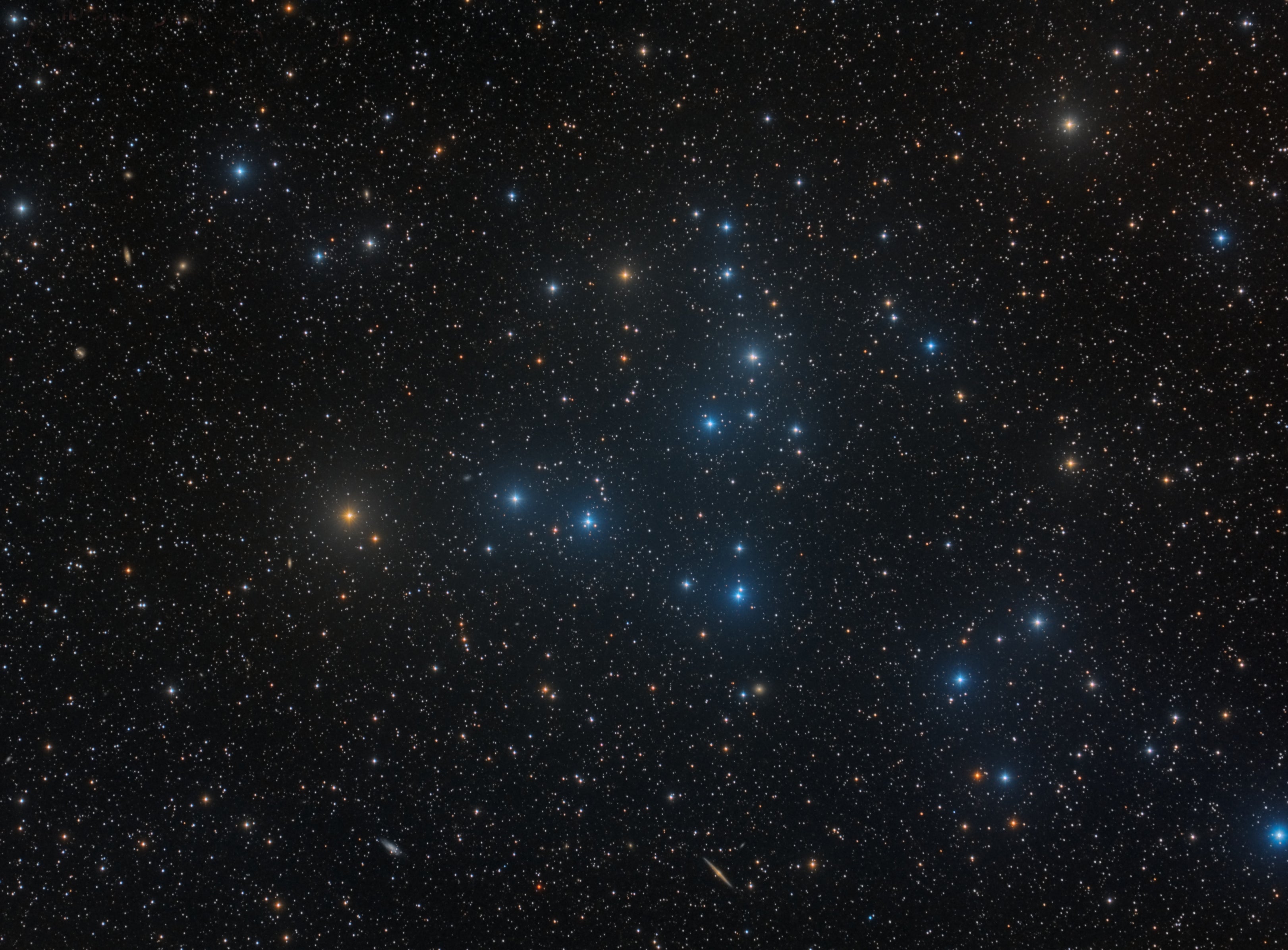
The Coma Star Cluster, also known as Melotte 111 and Collinder 256, is an open star cluster that lies in Coma Berenices, a faint northern constellation with only three stars brighter than magnitude 4.5. Look toward the constellation’s northwest corner for the yellow star Gamma (γ) Comae Berenices. When you find it, you’ve found the Coma Star Cluster. Gamma isn’t part of it, however, but rather a foreground star some 170 light-years away. The cluster is about 100 light-years more distant.
British astronomer Philibert Jacques Melotte made it the 111th entry in a catalog of star clusters published in 1915. It wasn’t until 1938, however, that astronomers confirmed that it is a true physical grouping.
The Coma Star Cluster glows at a relatively bright magnitude 1.8. It contains roughly 40 stars between magnitudes 5 and 10. About a dozen rise above naked-eye visibility. Because this object spans more than 4°, you’ll need optics with a wide field of view to see all the stars simultaneously. Start by using binoculars with apertures of 50mm or larger, and then switch to your telescope and select your lowest-power eyepiece.
This cluster’s two common names — Ariadne’s Hair and Thisbe’s Veil — are rooted in antiquity. The Greek mathematician Eratosthenes wrote that the stars represented the hair of the mythological figure Ariadne, daughter of King Minos of Crete. At the time, however, this cluster was part of Leo. Ptolemy III renamed it for his wife Berenice II, who once sacrificed her hair as a votive offering.
Thisbe’s Veil is a reference to Ovid’s Metamorphoses. It recounts the myth of Pyramus and Thisbe, two lovers who committed suicide due to a misunderstanding. In honor of their mutual devotion, Jupiter placed Thisbe’s veil in the sky.









